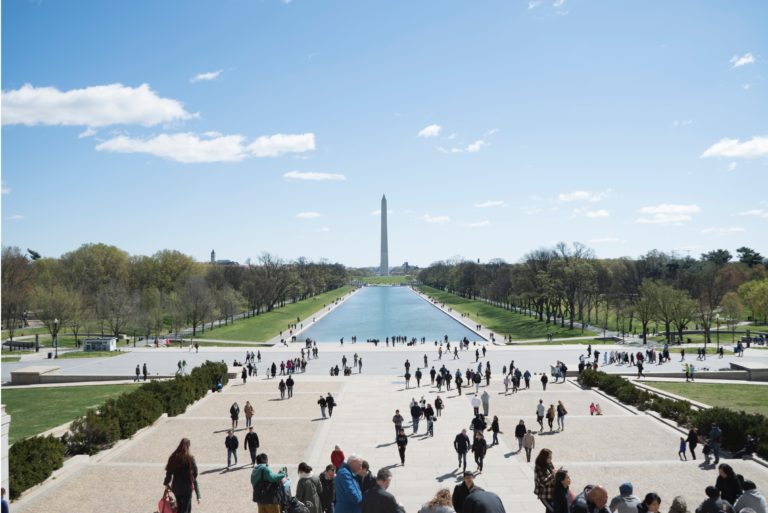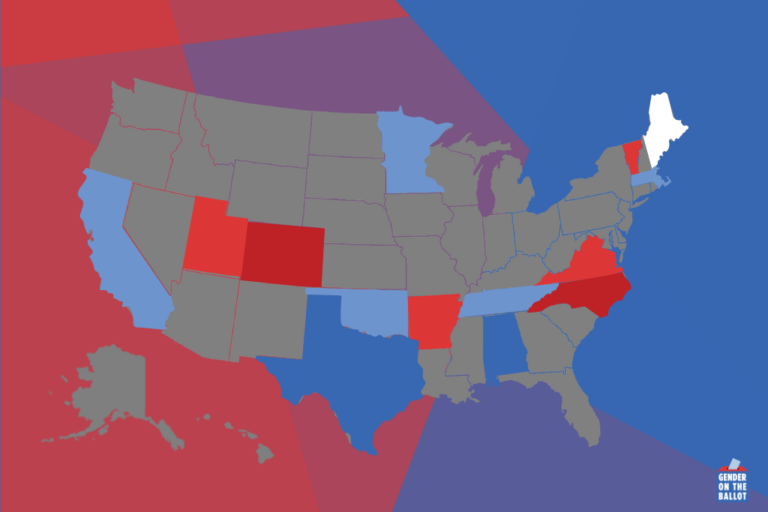In 2016, for the first time in history, a woman was on the presidential…
Happy Anniversary Gender on the Ballot!

2020 has been eventful, full of surprises, and as the November election looms, shows no signs of slowing down.
One year in, Barbara Lee Family Foundation’s Executive Director Nicole Carlsburg and American University Women & Politics Institute Executive Director Betsy Fischer Martin weigh in on the state of gender in the 2020 election cycle.
1. What were the biggest stand-out gender moments from the 2020 presidential primaries?
Nicole: Seeing a record number of women on the debate stage was amazing – and so was seeing a frank discussion of “electability” and women candidates. In the January 2020 primary debate, Senator Elizabeth Warren challenged the premise that a woman presidential candidate wouldn’t be electable head on, saying, “Look at the men on this stage. Collectively, they have lost 10 elections. The only people on this stage who have won every single election that they’ve been in are the women, Amy and me.” Electability was a code word for sexism throughout the 2020 primaries, and it was so powerful to see a woman candidate call it out.
Betsy: The stand-out gender moment for me in 2020, were the hundreds of thousands of little moments that a young girl looked up at the television, glanced at a website, or attended a campaign event and saw someone that looked like her future self, running for President of the United States. We can’t underestimate the long-term impact of moments like the “pinky promises” that Elizabeth Warren shared in countless selfie lines where she’d introduce herself by saying, “I’m Elizabeth Warren and I’m running for president because that’s what girls do.” We can’t discount the importance of the times where a young girl would hear Kamala Harris, a biracial woman, say “Don’t you ever accept what anyone tells you are the limitations of what you can do based on your race and gender.” Those moments pay dividends. And we’ll be a richer country for it sometime soon, I’m sure.
2. What gender + politics trends should we have an eye on as we get closer to Election Day?
Nicole: COVID-19 has put a spotlight on the strengths women bring to public office, and women across the country are changing the face of leadership and paving the way for more women like them. As Barbara Lee, president and founder of the Barbara Lee Family Foundation, wrote “This crisis is reshaping our society, our economy and our lives at warp speed. Let’s make sure it also reshapes our notion of what [..] leadership looks like.”
Betsy: I think in a few weeks, when Biden announces his running mate, we will see a renewed spotlight on gender in politics. All we know now is that the selection will be a woman. Once she is named, will we have a continuation of the “electability” discussion that dominated so much of the primary process? Will we see the emergence of sexism on campaign trail in terms of media coverage or public opinion? In many respects some of the gender dynamics we discussed earlier this year will reemerge during the general election.
3. What progress for women in politics do you hope 2020 brings?
Nicole: In 1992, the first “Year of the Women,” people were convinced that it was the beginning of a sea change, but women’s leadership plateaued. In 2018, new records were set, and some wondered if we would see the same leveling off that we did in 1992. With an even larger number of women running for the U.S. House of Representatives in 2020, it’s clear that 2018 wasn’t just a moment, but the beginning of a new era of women’s leadership. Just as exciting as any records being broken is the fact that, instead of trying to fit into a template of what a candidate should look like, women from all backgrounds are running as their authentic selves. Women are claiming their right to run and, win or lose, they are changing what a leader looks like – which counts as progress in our book.
Betsy: We know a record number of women, on both sides of the aisle, are running for House seats this year. I don’t think you have to look much further than the state of New Mexico to see the recruitment efforts of both political parties are having an impact. All six of the major party nominees on the November ballot in the state’s three congressional races are women, setting up New Mexico to have the largest all-female delegation in history next year. Women are running, voters are supporting women, and women are winning.








